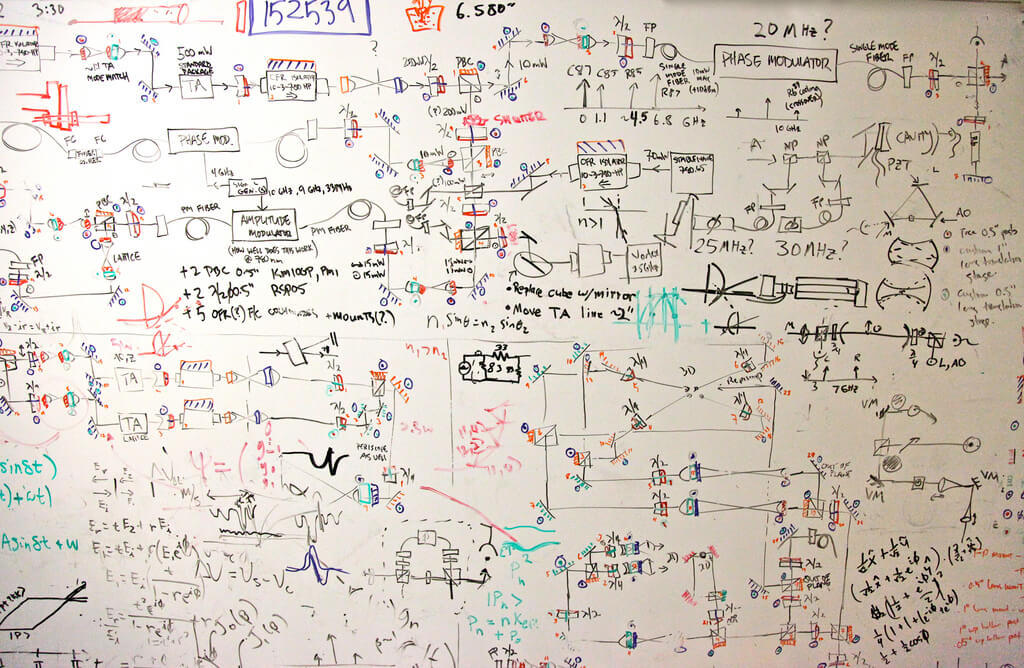A bit about technology and the Internet
- Transfer
Sometimes it’s useful to take a look at the history of technology development in order to rethink some approaches to our own developments. Today we decided to take a look at what the Internet will have in terms of development in the near future. / photo Steve Jurvetson CC
Maciej Cegłowski wrote a whole story about this , which he discovered by comparing aircraft. As a child, he happened to see the contrast between the IL-62 and the Boeing 747 - he shocked the author so much that he still very vividly describes this story.

For many, the 747th is a work of engineering and a synonym for convenience. It has everything we are used to: from the folding seats to the shelves above them. The history of this aircraft is rich in vivid episodes. It even required a special factory, tens of thousands of drawings and millions of man-hours of work.
An interesting fact is that the priority project of the company at that time was not the 747th, but the supersonic 2707th . The company was convinced that it was the future of air travel (projected speed up to 2900 km / h), and Soviet engineers did not lag behind and designed the Concorde.
The author draws this analogy for a reason. The moral is that 50 years ago, people saw a completely different future and expected a completely different future from the beginning of the 2000s. For example, a real opportunity to go to the moon or even take an interplanetary journey. Expectations are reality.
It turns out that today the most advanced passenger aircraft is the Boeing 787. The configuration of the airliner has not changed for 60 years. But why did such a high speed of technology development not allow them to gain a foothold in the philistine life and stay on the market?
The answer is simple - economic feasibility - the cost of development and operation - government subsidies that are not infinite. It turned out that few people need to fly across the ocean in three hours, instead of six.

/ photo Hernán Piñera CC
With the Internet, the story is about the same. We have great prospects: the growth of computing power and the development of VR. But there are both economic and social barriers.
Today, our gadgets without problems do everything that is necessary - they allow you to take pictures, make calls and go online. Yes, you only need to gradually improve displays, cameras, battery and the quality of the Internet connection. But overall, most of us do not need home supercomputers.
The author notes that exponential growth has instilled in us terrible habits - such as neglecting the past and history. Neglecting the past also ignores the realities of our industry, which is built entirely on technology inheritance. From OS to Internet protocols, from monitors to email.
It turns out that for many years we have complained that browsers are not able to properly display page markup and java scripts. As soon as everything returned to normal, we began to rewrite the libraries, which changed browsers from the inside, making them slower.
As a result, in order to understand the optimal scenario, you need to understand what the Network is. Someone believes that we need to combine knowledge, people and cats. Others want to fix the world with software. Still others strive to become immortal beings from pure energy.
These three visions lead to three radically different worlds. The first group wants to unite the world. The second group wants to absorb the world. The third group wants to put an end to the world. These three points of view are incompatible.
Today we get hundreds of thousands of companies that do not produce anything and with amazing losses are estimated at billions of dollars. Moreover, millions of people work in rice fields, textile factories and live in monstrous poverty.
What if, instead of thinking about changing the world with tomorrow’s technology, we use the technology we have today and let the world change us?

For many, the 747th is a work of engineering and a synonym for convenience. It has everything we are used to: from the folding seats to the shelves above them. The history of this aircraft is rich in vivid episodes. It even required a special factory, tens of thousands of drawings and millions of man-hours of work.
An interesting fact is that the priority project of the company at that time was not the 747th, but the supersonic 2707th . The company was convinced that it was the future of air travel (projected speed up to 2900 km / h), and Soviet engineers did not lag behind and designed the Concorde.
The author draws this analogy for a reason. The moral is that 50 years ago, people saw a completely different future and expected a completely different future from the beginning of the 2000s. For example, a real opportunity to go to the moon or even take an interplanetary journey. Expectations are reality.
It turns out that today the most advanced passenger aircraft is the Boeing 787. The configuration of the airliner has not changed for 60 years. But why did such a high speed of technology development not allow them to gain a foothold in the philistine life and stay on the market?
The answer is simple - economic feasibility - the cost of development and operation - government subsidies that are not infinite. It turned out that few people need to fly across the ocean in three hours, instead of six.

/ photo Hernán Piñera CC
With the Internet, the story is about the same. We have great prospects: the growth of computing power and the development of VR. But there are both economic and social barriers.
Today, our gadgets without problems do everything that is necessary - they allow you to take pictures, make calls and go online. Yes, you only need to gradually improve displays, cameras, battery and the quality of the Internet connection. But overall, most of us do not need home supercomputers.
The author notes that exponential growth has instilled in us terrible habits - such as neglecting the past and history. Neglecting the past also ignores the realities of our industry, which is built entirely on technology inheritance. From OS to Internet protocols, from monitors to email.
It turns out that for many years we have complained that browsers are not able to properly display page markup and java scripts. As soon as everything returned to normal, we began to rewrite the libraries, which changed browsers from the inside, making them slower.
As a result, in order to understand the optimal scenario, you need to understand what the Network is. Someone believes that we need to combine knowledge, people and cats. Others want to fix the world with software. Still others strive to become immortal beings from pure energy.
These three visions lead to three radically different worlds. The first group wants to unite the world. The second group wants to absorb the world. The third group wants to put an end to the world. These three points of view are incompatible.
Today we get hundreds of thousands of companies that do not produce anything and with amazing losses are estimated at billions of dollars. Moreover, millions of people work in rice fields, textile factories and live in monstrous poverty.
What if, instead of thinking about changing the world with tomorrow’s technology, we use the technology we have today and let the world change us?
